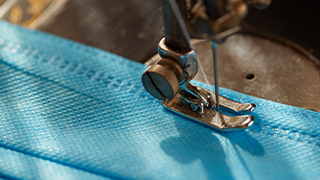Garment Markers, Spreading, & Cutting
Markers, Spreading, & Cutting
Pattern Engineering
Apparel manufacturers create patterns in several ways. The starting point is often pattern drafting, in which body measurements are taken from a fit model or body form. The designer uses these measurements to create “slopers,” which are a set of basic patterns used in the development of styled garments. Other common terms for slopers are “basic blocks,” “master patterns,” and “foundation patterns.”
Marker Making
In apparel manufacturing, a marker is a special kind of stencil that illustrates how pattern pieces of one or more garments should be cut from several layers of fabric. The person who arranges the marker is the marker planner. It is the marker planner’s job to arrange the pattern pieces efficiently, wasting as little of the fabric as possible. The percentage of fabric cut into pieces is called the pattern yield (material utilization). When the yield is high, the arrangement of pieces is described as a “tight marker.”
Cutting Methods
Apparel manufacturers share the builder’s appreciation for cutting with precision. Before workers make the first incision into layers of fabric, they must ensure that the fabric is properly arranged, in a process called “spreading.” After spreading, the pattern map is placed on top of the stack, and the markers are cut. Various types of cutters are used.


